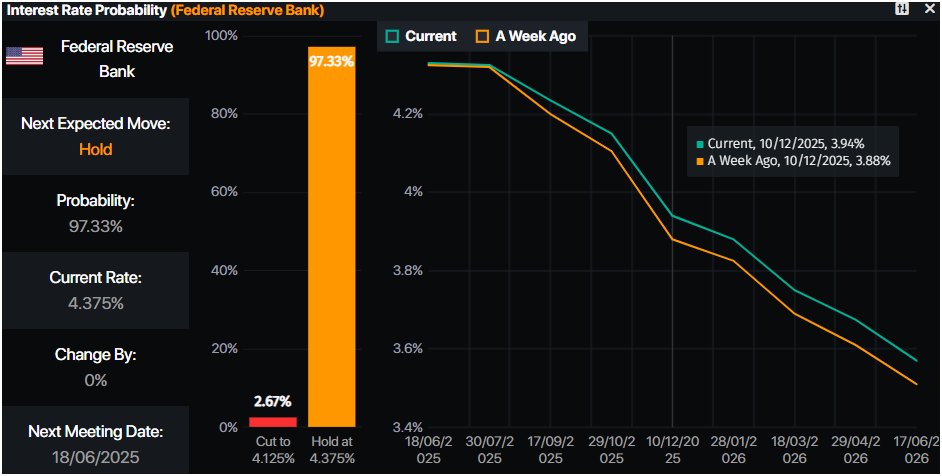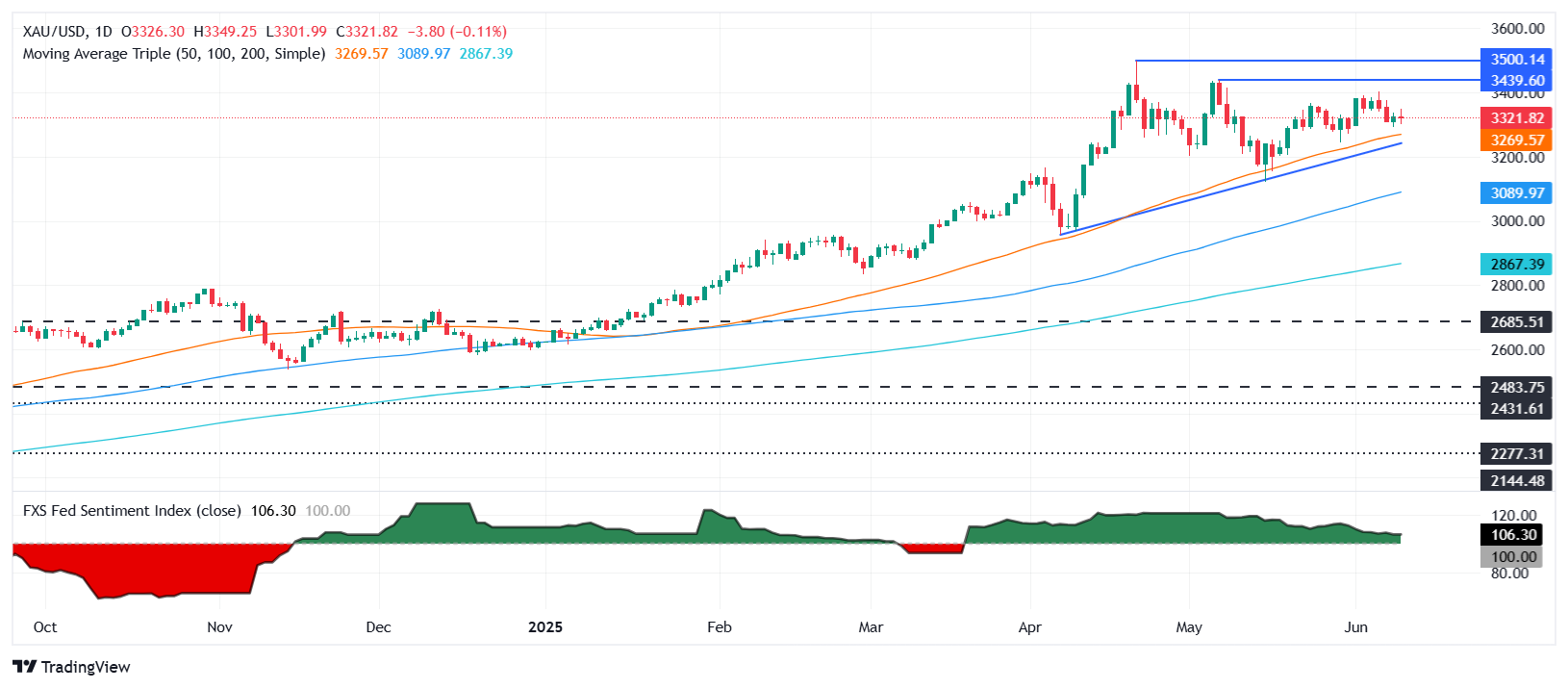Gold price steadies above $3,300 as markets cheer progress in US-China talks

- XAU/USD trades at $3,328, up 0.10%, after bouncing off $3,300 intraday low.
- Positive US-China trade talks in London lift risk appetite, boost equities.
- Choppy price action appears as traders await key US CPI data due Wednesday.
XAU/USD technical outlook: Gold price trades sideways within $3,300-$3,350 corridor
From a technical standpoint, XAU/USD found strong support around $3,290-$3,300 provided by a support trendline, along with the current week’s low. Momentum is also favoring further upside as the Relative Strength Index (RSI) remains bullish.
If XAU/USD clears $3,350, this opens the door for a move toward $3,400. Further strength lies in $3,450 and the all-time high (ATH) at $3,500.
On the flip side, Gold sliding below $3,300 opens the path to challenge key support levels, such as the 50-day Simple Moving Average (SMA) at $3,265, followed by the April 3 high, which has since become support at $3,167.

Gold FAQs
Gold has played a key role in human’s history as it has been widely used as a store of value and medium of exchange. Currently, apart from its shine and usage for jewelry, the precious metal is widely seen as a safe-haven asset, meaning that it is considered a good investment during turbulent times. Gold is also widely seen as a hedge against inflation and against depreciating currencies as it doesn’t rely on any specific issuer or government.
Central banks are the biggest Gold holders. In their aim to support their currencies in turbulent times, central banks tend to diversify their reserves and buy Gold to improve the perceived strength of the economy and the currency. High Gold reserves can be a source of trust for a country’s solvency. Central banks added 1,136 tonnes of Gold worth around $70 billion to their reserves in 2022, according to data from the World Gold Council. This is the highest yearly purchase since records began. Central banks from emerging economies such as China, India and Turkey are quickly increasing their Gold reserves.
Gold has an inverse correlation with the US Dollar and US Treasuries, which are both major reserve and safe-haven assets. When the Dollar depreciates, Gold tends to rise, enabling investors and central banks to diversify their assets in turbulent times. Gold is also inversely correlated with risk assets. A rally in the stock market tends to weaken Gold price, while sell-offs in riskier markets tend to favor the precious metal.
The price can move due to a wide range of factors. Geopolitical instability or fears of a deep recession can quickly make Gold price escalate due to its safe-haven status. As a yield-less asset, Gold tends to rise with lower interest rates, while higher cost of money usually weighs down on the yellow metal. Still, most moves depend on how the US Dollar (USD) behaves as the asset is priced in dollars (XAU/USD). A strong Dollar tends to keep the price of Gold controlled, whereas a weaker Dollar is likely to push Gold prices up.
